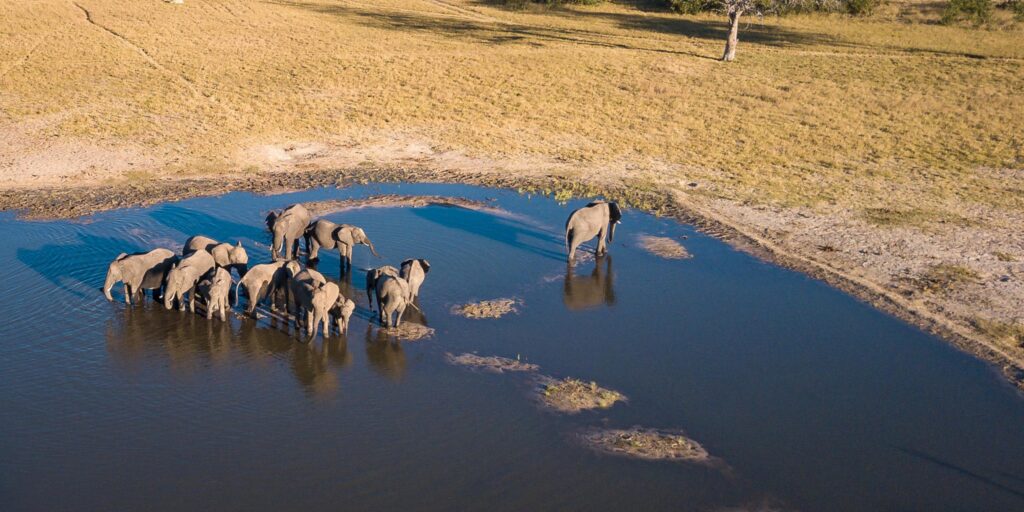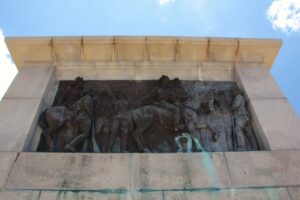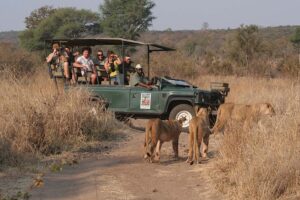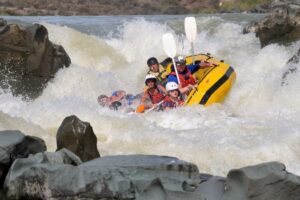Shumba Pan: Hwange National Park’s Waterhole Wildlife
Nestled within the vast expanse of Zimbabwe’s Hwange National Park, Shumba Pan is a hidden gem that offers a unique wildlife experience. This waterhole is a magnet for a diverse array of animals, making it a must-visit spot for nature enthusiasts and wildlife photographers. Whether you’re a seasoned safari-goer or a first-time visitor, Shumba Pan promises an unforgettable encounter with Africa’s majestic wildlife.
What to See at Shumba Pan
Shumba Pan is renowned for its vibrant wildlife activity, especially during the dry season when water sources are scarce. Visitors can expect to see large herds of elephants, often numbering in the hundreds, as they gather to drink and bathe. The sight of these gentle giants interacting in their natural habitat is truly awe-inspiring.
In addition to elephants, Shumba Pan attracts a variety of other animals, including buffalo, zebras, giraffes, and a plethora of antelope species. Predators such as lions and hyenas are also frequent visitors, drawn by the abundance of prey. Birdwatchers will be delighted by the diverse avian life, with species ranging from the colorful lilac-breasted roller to the majestic African fish eagle.
A Bit of History and Interesting Facts
Hwange National Park, established in 1928, is Zimbabwe’s largest game reserve, covering approximately 14,600 square kilometers. Shumba Pan, like many waterholes in the park, plays a crucial role in sustaining the local wildlife, especially during the dry months. The name “Shumba” means “lion” in the local Shona language, hinting at the presence of these iconic predators in the area.
An interesting fact about Shumba Pan is its role in conservation efforts. The waterhole is part of a network of artificial pans maintained by the park authorities to ensure a consistent water supply for the animals. This initiative has been vital in supporting the park’s diverse ecosystem, particularly during periods of drought.
Getting There and Tips for First-Time Visitors
Reaching Shumba Pan is an adventure in itself. Hwange National Park is accessible by road from Zimbabwe’s capital, Harare, or from Victoria Falls, which is about a two-hour drive away. The park has several entry points, with the Main Camp being the most popular. From there, Shumba Pan is a short drive, and visitors can either self-drive or join guided safari tours.
For first-time visitors, it’s essential to plan your visit during the dry season, from July to October, when wildlife congregates around waterholes. Early morning and late afternoon are the best times for game viewing, as animals are most active during these cooler periods. Remember to bring binoculars, a camera, and plenty of water. It’s also advisable to wear neutral-colored clothing to blend in with the surroundings and avoid startling the animals.
In conclusion, Shumba Pan offers a captivating glimpse into the heart of Africa’s wildlife. Its rich biodiversity and the sheer spectacle of animals gathering at the waterhole make it a highlight of any visit to Hwange National Park. Whether you’re there to witness the majestic elephants or to catch a glimpse of a lion on the prowl, Shumba Pan is sure to leave a lasting impression.








